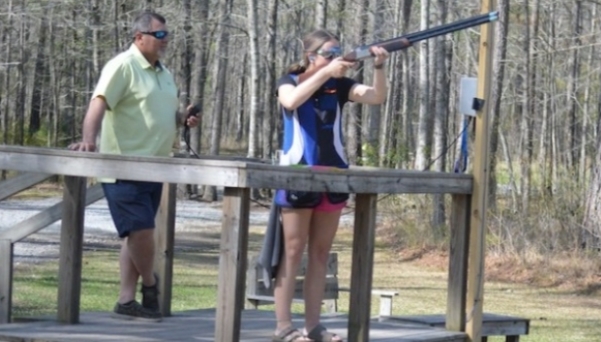
Traveling as a Sports Shooter: All You Should Know
Anyone who regularly participates in shooting competitions cannot avoid traveling with firearms. Sometimes even an international flight is needed to get to the destination. Firearms in general, but even the air guns and air pistols used in competitions, can be dangerous if mishandled. In addition, there are some laws and regulations to be observed when you are out and about with your weapons and equipment. Any serious competitive shooter should be aware of the legal pitfalls and safety precautions to be taken when it comes to traveling with guns.
To help you with your travel preparations, we have put together a few recommendations for you.
Check the laws of the destination country and all transit countries
When traveling with your guns and shooting gear, you may need to cross country or (in the US) state borders. In the United States, each state has different laws governing firearms and air guns. These laws are subject to change at any time and are too extensive to list here. However, there are a few general principles you should know:
- In order to be allowed to travel with a firearm, you should have the right to possess one in every state you are transiting through.
- The weapons must not be accessible. This means that they must be unloaded and should ideally be locked and transported in the trunk.
- In addition, the ammunition should be stowed separately from the weapons so that you do not get into trouble if you are stopped.
- At a traffic stop, inform the officers that you are driving with firearms and other shooting equipment in the trunk. Make sure you have all the necessary papers ready.
It is even better to check with the local police before you travel, or to consult with a lawyer about the legal requirements for traveling with firearms, ammunition and other equipment. Don’t forget to take all the necessary documents with you!
Check out this gun store in Virginia, USA from where you can get everything to fulfill your shooting hobby: virginiacitizensarmory.com
Familiarize yourself with the rules of the responsible authority when flying within the USA
In principle, it is not a problem to fly with firearms. However, according to the rules of the responsible authority, the Transport Security Administration (TSA), you must check your weapons as baggage. The weapons must of course be unloaded and stowed in a locked case. However, you are not allowed to carry ammunition with you, as this could be dangerous at high temperatures (risk of explosion!). Depending on the country or state, different rules may apply at individual airports. The on-site officer ultimately decides whether you are allowed to board the plane with your firearm or air rifle. We therefore recommend sending the equipment in good time before the competition and picking it up from the courier after landing.

Make sure your firearm and other gear is safely stowed
When traveling with firearms, air rifles or air pistols, ammunition and other shooting equipment, safety is the number one priority. You should transport your guns in a hard case and store ammo separately in a heat-resistant container. If you are traveling with an air gun, especially with a CO2 weapon, you should not carry new CO2 capsules in the car, as overpressure can occur even at relatively low temperatures. The capsules could then explode. All firearms and air guns or air pistols should always be unloaded and, if possible, carried with the breech open.
What are the essential things to carry along with Travelling for Shooting as a Hobbyist?
If you’re a hobbyist photographer or filmmaker who travels for shooting, there are a few things you should think about packing to make sure you get the greatest photos and have a hassle-free trip. The following is a thorough list of what you should bring:
Camera(s):
Primary Camera: Carry your main camera body, whether it’s a DSLR, mirrorless, or a high-quality point-and-shoot camera.
Backup Camera: If you have one, it’s always a good idea to bring a backup camera to avoid missing shots in case of any technical failures.
Lenses:
Wide-Angle Lens: Ideal for landscape photography, capturing wide scenes, and emphasizing depth of field.
Standard Zoom Lens: A versatile lens for general shooting, offering a range of focal lengths suitable for different situations.
Telephoto Lens: Useful for capturing distant subjects, wildlife, or getting closer shots without physically approaching your subject.
Macro Lens (optional): If you’re interested in close-up shots of small details, consider bringing a macro lens.
Tripod:
A sturdy tripod is essential for stable shots, especially in low-light conditions or when shooting long exposures. Look for a lightweight and durable tripod that’s easy to carry.
Camera Accessories:
Extra Batteries: Ensure you have spare camera batteries to avoid running out of power during extended shooting sessions.
Battery Charger: Carry a charger that’s compatible with your camera batteries to recharge them overnight.
Memory Cards: Pack multiple high-capacity memory cards to store your photos and videos. Consider fast and reliable cards with ample storage.
Card Reader: A portable card reader allows you to transfer files from your memory cards to a laptop or other devices.
Lens Filters: Consider carrying a set of filters like UV, polarizing, and neutral density filters to enhance your shots and control light conditions.
Lens Cleaning Kit: Keep your lenses and filters clean with a microfiber cloth, lens cleaning solution, and a blower brush.

Remote Shutter Release: It helps minimize camera shake when shooting long exposures or self-portraits.
Lighting Equipment:
External Flash: If you anticipate shooting in low-light situations or indoors, an external flash can provide better lighting control.
Light Diffuser/Reflector: A portable diffuser or reflector helps soften harsh light or redirect it for more flattering results.
Camera Bag:
Invest in a durable and well-padded camera bag that can accommodate your camera, lenses, and accessories. Look for a bag with adjustable dividers to customize the interior according to your gear.
Laptop or Storage Device:
Carrying a laptop allows you to review and back up your shots on the go. Alternatively, consider a portable external hard drive or SSD for storing your files.
Miscellaneous Items:
Lens Hood: Reduces lens flare and protects the front element of your lens.
Lens Pen: Helps clean smudges and fingerprints from the lens.
Portable Power Bank: Useful for charging your camera, phone, or other devices when you’re away from power outlets.
Travel Adapter: If you’re traveling internationally, bring a suitable adapter to charge your devices.
Rain Cover: Protects your camera and gear from rain or adverse weather conditions.
Comfortable Camera Strap: Opt for a comfortable and adjustable strap to carry your camera around your neck or shoulder.
Remember, this list may vary based on your specific shooting interests and preferences. Before your trip, research the shooting locations, weather conditions, and any specific equipment requirements to ensure you’re fully prepared for your photography or videography adventure.
Summary:
Traveling with firearms and air guns can seem like an almost impossible challenge at first – but it’s possible! If you follow all the rules and have the necessary documentation at hand, you can enter almost any country with your guns. However, there is no harm in clarifying all questions with a specialist before the start of the trip.







